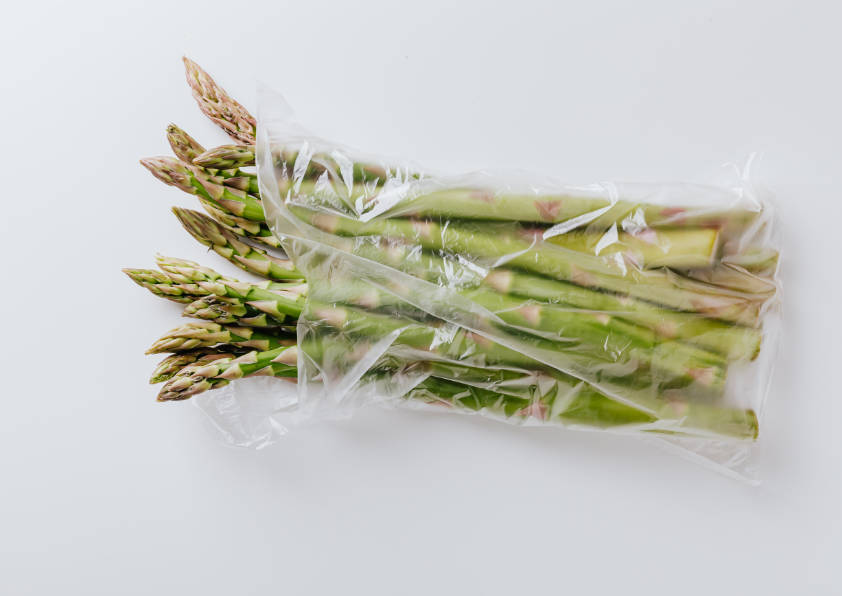Long Narrow Bags Vs Layflat Tubing: Which One’s Right For You?
Imagine you make long, narrow products – like umbrellas, or golf clubs. Or maybe custom made-to-measure blinds and curtain rails. Whatever the product, it’s likely you’ll need some kind of protective packaging layer, and polythene is pretty much the gold standard. Eventually, you’ll hit the age old polythene packaging dilemma that all makers of long, thin things face: should you choose long narrow bags, or go with layflat tubing (LFT)?
Read more – what is layflat tubing?
They might seem similar on the face of it, but so do frogs and toads. In reality, they’re totally different beasts altogether. So, as usual with these kinds of things, the answer isn’t straightforward.
Both layflat tubing and long narrow bags have advantages for safely packing long items, but each has drawbacks, too, depending on your products and packaging setup.
Let’s explore long narrow bags, where they make sense, and why layflat tubing might be a better option for some manufacturers.

Long narrow polythene bags vs LFT – check the spec
Layflat tubing can be made to any width, from 19mm up to an extraordinary 9.6 metres. The polythene can be made with a custom blend of additives, in almost any colour and opacity, with bespoke printing. Thicknesses can range from 8mu to 300mu (32 gauge to 1200 gauge).
Learn more about micron to gauge conversion in our polythene thickness chart
That’s a lot of customisation and range, and this makes LFT incredibly versatile, and suited to any number of applications. But long narrow bags have a couple of advantages in the design and specification phase. In addition to customisations like width, thickness, polymer blend, additives and printing, long narrow bags can be specced up even further.
For instance, long polythene bags can be made with gussets, which can increase their strength while using less material. Gusseted polythene bags also fit better, minimising waste and providing a cleaner look. Additional welds can also be applied to polythene bags for stronger seams, and the bags can be made to a set length – meaning no more cutting down to size. On top of all this, polythene bags on a roll can be specified for automation or faster manual packaging.
The benefits of using long narrow bags
Long narrow bags are great for automated lines and speedy manual packaging, for products of a fixed size. If the length of the product is not variable and requires little supervision during the packaging phase, long narrow bags made to spec are more efficient in terms of speed, and they get a brilliant, consistent finish.
But what if you make custom products, or items of varying length? Although it’s perfectly possible to get long narrow bags in a wide variety of widths and sizes, using a range of fixed size bags might not be the best solution. You risk having lots of seldom-used packaging stock, complex reorders and a confusing packaging process.
LFT can be a better choice when it comes to packaging custom-made products in small to medium operations.
The benefits of using layflat tubing
Layflat tubing is great for manual packaging, and products of variable or custom length. It can also be used to package multiple products up in a single order. It’s super versatile because of this. However, this variability means that LFT tends to be more manual – and while automation is often ideally done with polythene films, the initial setup and investment is far higher than it is with bags.
Read more – Autobags and automated packaging systems
Using LFT is great for businesses that manufacture long, narrow items, in bespoke lengths; like roller blinds or made-to-measure flat packed furniture. LFT can be integrated into automated or semi-automated packaging systems, but the initial investment is usually higher, and bespoke operations tend to be too small to absorb that cost.
Long narrow bags are best suited to product ranges of narrow items, with fixed or similar lengths. Things like sporting goods, musical instruments, umbrellas or medical supplies. They offer scale at speed, allowing easier and cheaper automation processes, faster manual packaging, better fit – and a higher performance of packaging due to a higher degree of customisation.
The bottom line? Long narrow bags cost more per unit than LFT. But in the right packaging setup, long narrow bags can save countless labour hours and increase output – perhaps by as much as a tenfold increase.
Still, it’s all down to what you make and how you need to operate as a business. To find your ideal packaging solution, talk to NPF Packaging.
Scale up at speed, with long narrow bags
Speak to a packaging design expert at NPF Packaging – and find out if you should choose LFT or polythene bags for your business. Get in touch online, or call us on 01773 820415.


